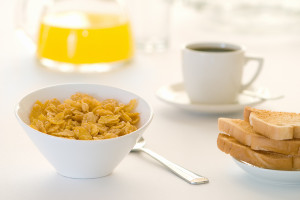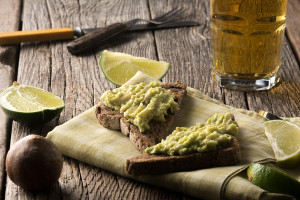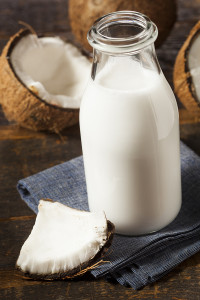Breakfast seems to be a meal that many people struggle with when transitioning to a healthy eating lifestyle. Culturally, we are a country who will choose toast and spreads or cereal and milk, plus a tea or coffee to start our day. Nutritionally, this is pretty poor fair to break a 12 hour fast. Often high in simple refined carbohydrates, sugars, colours, flavours and preservatives, plus caffeine from your beverage of choice, these traditional breakfasts can leave us foggy headed, hungry and low in energy. Despite the marketing ploys, these breakfast choices are often very low in insoluble fibre, proteins and good fats; essential elements for healthy energy production, digestion and metabolic function. In these blogs, I will open your eyes to the wide variety of healthy and delicious breakfast options out there.
 As the number of people suffering from food allergies and intolerances continues to increase, I often find my patients struggling with alternative, healthy breakfast options. Some will be wanting to avoid gluten and dairy for these reasons, others will be simply wanting to revamp their breakfast choices to boost their nutrition and health. Let’s look first at some healthy conversions you can make, then in the next blog we will investigate some raw breakkie options, some vegetarian and vegan choices as well as some allergy free meals you’ll love!
As the number of people suffering from food allergies and intolerances continues to increase, I often find my patients struggling with alternative, healthy breakfast options. Some will be wanting to avoid gluten and dairy for these reasons, others will be simply wanting to revamp their breakfast choices to boost their nutrition and health. Let’s look first at some healthy conversions you can make, then in the next blog we will investigate some raw breakkie options, some vegetarian and vegan choices as well as some allergy free meals you’ll love!
Healthy Swaps
Some people just want to have cereal and milk or toast and spreads for breakfast, and hey that can be fine, it’s all about choosing healthy options and still having the style of foods you like.
Toast
- If you are a toast person, try experimenting with alternative grains for a vitamin and mineral boost. There are many delicious breads available these days made from ancient grains such as spelt, rye, millet, kamut, rice and buckwheat. These grains are packed with B vitamins for energy production, not to mention fibre for digestion and bowel health.
- The ‘grainier’ the bread, the more fibre it will contain, AND the more filling it will be, so choose heavier denser breads instead of light, soft white breads.
- Choose a sourdough bread for easier digestion. Many people find bread causes bloating. This could be related to an intolerance to the grain itself, or possibly due to the yeasts used in raising the dough. A sourdough is a traditional starter culture that causes the bread to rise. It may also be easier on the digestion for some people.
- When deciding what to put on your toast, think about how hungry you are. Something sweet like honey or jam is not going to give you long lasting energy or go a long way in filling you up. Far better to choose avocado, tomato and sprouts, or a fresh nut butter and sweetener of choice (the old favourite, peanut butter and banana!) to sustain you longer.
- Look at the ingredients of your spreads and toast toppings. Peanut butter from the supermarket is not just crushed peanuts anymore! Many health food stores make their own fresh nut butters, from almond to macadamia, peanut to pecan, you’re sure to find something healthy, pure and delicious! If you’re a sweet tooth, choose a raw honey for a delicious nutrient hit, or an organic jam with few ingredients.
- And seriously, just choose butter or coconut oil. Don’t touch that evil margarine stuff! Avoid the hydrogenated vegetable oils in favour of natural organic butter, or if you’re vegan, extra virgin coconut oil. Your body will thank you. These will not make you fat, they can actually help your body burn fat for energy so enjoy!
Cereals
- In regards to cereals, health food stores nowadays often carry a huge variety of bulk food items. Why not experiment and make your own from ingredients found in bulk?
- Organic, raw mueslis with a combination of nuts, seeds and fruits are going to be a healthier choice than your standard processed cereal. Make sure your choice is raw, as toasted muesli is much higher in bad fats than the uncooked variety.
- Make sure the ‘fruit’ in your cereal is actually fruit. Many cereals contain ‘fruit flavoured pieces’ which are actually like little lollies or jellies, masquerading as real fruit.
- Watch out for colours, flavours, added sugars and preservatives. The best raw organic muesli will be completely free from these baddies.
- And if a bowl of cereal is all you want in the morning, try giving it a nutrient hit with some freshly sliced fruit (not tinned fruit), seeds or nuts. Perhaps you want to make your own nutrient sprinkle by blitzing up almonds, flax seeds, chia and sunflower seeds, and adding a dessert spoon to your cereal.
Milk
- Milk is just not milk any more. It has been adulterated, bastardised and chemically modulated to this shadow of what milk used to be. If you wish to drink dairy milk, choose as close to nature as possible. If you can get it unhomogenised, organic or raw, that will be the best. The low fat variety will encourage the calcium to be leached FROM your bones, so in all honesty, no one should be drinking it.
- If you are someone who doesn’t deal well with dairy, forget the A2 or the lactose free milks and just avoid it all together! There a numerous options popping up in supermarkets and health food stores these days with nut milks, rice or oat milk, and combinations such as rice and coconut, or coconut and almond that you can experiment with.
- Nut or seed milks are very easy to make at home with a nut milk bag. Some milks such as macadamias, cashews and hemp seeds may not need straining through a nut bag, so feel free to experiment with these to start with.
In the next blog we will explore some of the alternative breakkie options out there. Perhaps you want to increase the raw content of your diet and need some raw food breakkie tips? Maybe you’re vegan or vegetarian and keep getting stuck with the same old boring breakfast day after day. Or perhaps you’re just looking for delicious and nutritious ways to boost your energy levels, health and vitality through the foods you eat. Stay tuned! More to come.
Rhianna
![]()


2 commentsAdd comment
I wanted to know why, in particular, low fat milk is more likely to leach calcium from your bones (as per details in What’s for Breakfast Part 1)?
Hi Jolanta,
Sorry I missed your comment. Have a look at this link for some of the info available out there. http://milk.elehost.com/html/why_does_calcuim_leave_the_bon.html
My understanding is to do with the pH, specifically the acidity of milk, and calcium being alkaline, more likely to be leached from bones to neutralize the acidity. It is not 100% accepted understanding as yet, but have a look at some of the research so far and see what you think.
Warm wishes,
Rhianna 🙂